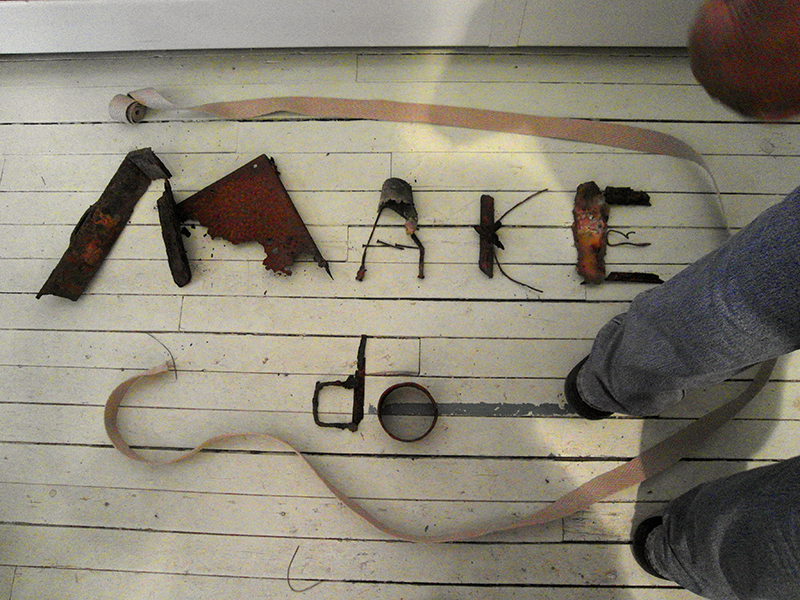
Editor's Note: From October 4 – December 14, 2019 a celebration of DesignInquiry will take place in Portland, Maine, at the Institute of Contemporary Art at Maine College of Art. For two-and-a-half months DesignInquiry: Futurespective will unroll a series of events, residencies, pop-ups and exhibitions, in recognition of over a decade of DesignInquiry’s existence. The exhibition is organized by the Institute of Contemporary Art at Maine College of Art, with Interim Director of Exhibitions Nikki Rayburn, and guest curators Gabrielle Esperdy, and Denise Gonzales Crisp, Margo Halverson, and Emily Luce.
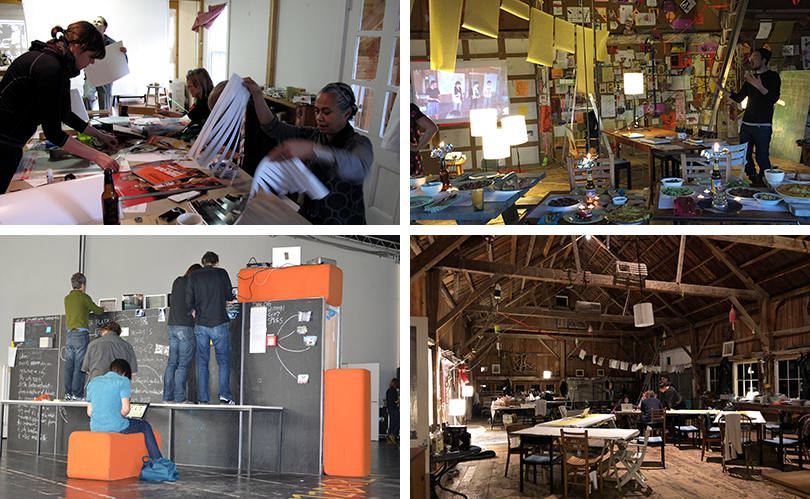
Ask four or five people to define DesignInquiry and you’ll get four or five very different answers.
It’s a mirage.
It’s a prism or kaleidoscope.
It’s a frame of mind.
It’s something you have to travel to.
It’s unnamable, it’s unchartable, with an uncanny aspect, but it’s also warm and generous.
It’s everything you want a gathering to be.
Ask the founders when DesignInquiry was launched, some will say a decade ago, others will say more like 15 years back. The upcoming DesignInquiry: Futurespective show touts a 10-year history, but participants recall that DesignInquiry gatherings first took place on a small island in Maine in 2006. The facts are slippery. Accounts tend to vary. And no one is particularly concerned.
That’s DesignInquiry.
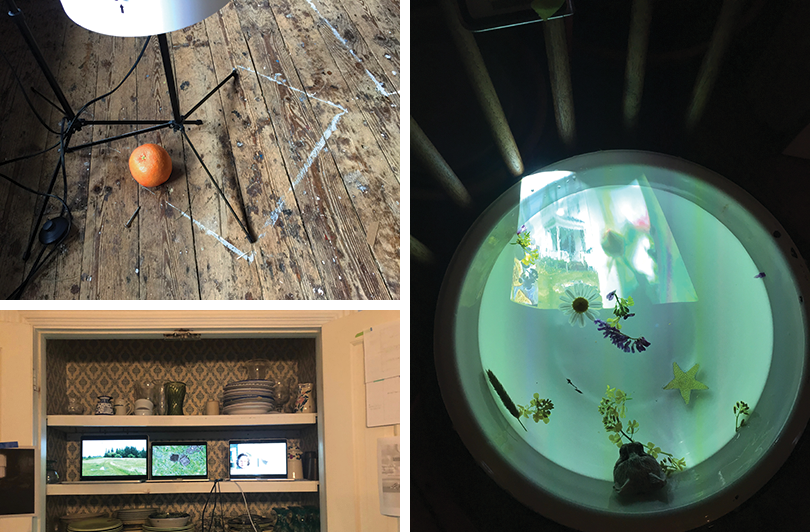
We do know a few things for sure: For many years, a group of designers have gathered together annually on the island of Vinalhaven mid-way up the coast of Maine, in an old house with a big barn to explore urgent and timely topics identified and framed by a smaller group of participants known as the “framers.” The founders of this group were Margo Halverson, Melle Hammer and Peter Hall, but the core group overseeing DI has since expanded, with Emily Luce currently serving as president. DI emerged from within the graphic design community, but sought interdisciplinarity from the start. As a result, each iteration of DI, though tinged with graphic design’s multimedia ethos, has included a broad range of people, including architects, musicians, painters, sculptors, writers, dancers, ornithologists, and more.
Each year the framers for DesignInquiry change, and while most of the gatherings have been in Maine, more recently new venues have sprung up so that DI is now an international endeavor. Other sites include Marfa, Montreal, Berlin, Detroit, Vancouver Island, and Devon (UK).
Whatever the locale, topics change with each iteration as framers attempt to zero in on important issues of the day with almost poetic provocations. For example, in 2009, “Design Less” explored productive nihilism; “Make Do” in 2011 considered the differences between making and doing; “Access” in 2014 considered ideas related to an open design practice; “No Quo” in 2015 hovered between quid pro quo and status quo to examine uneven forms of give and take; “Productive Counter-Production” in 2016 investigated the benefits of procrastination; and “Currency,” related both to money and to relevance, is the theme for multiple events in 2019.
Once the framers decide on a name and topic, calls for participants are distributed, the curious apply, and a group begins to assemble. Once gathered, across the course of a week, participants establish a kind of pop-up art/design community: hierarchies are flattened, and participants figure out how to make it all work in real time: they cook, clean, and eat together; they share work, create more work, offer prompts, and collaborate; questions are asked and explored; and the week often ends with participants experiencing a significant shift in their thinking and practice, although the effects can take weeks, months, even years to incubate.
While there were early attempts to name DI — a “working symposium,” for example, or a “residency for designers” — all attempts were deemed either too staid or too academic. DI was never intended to help legitimize design as an academic endeavor, nor was it supposed to productively expand a designer’s credentials in the professional sense. Although DI has developed a scope and culture distinctly its own over the years, its spirit feels rooted in the traditions of radical education like Black Mountain College, or the Blueprint for Counter Education (first edition, 1970).
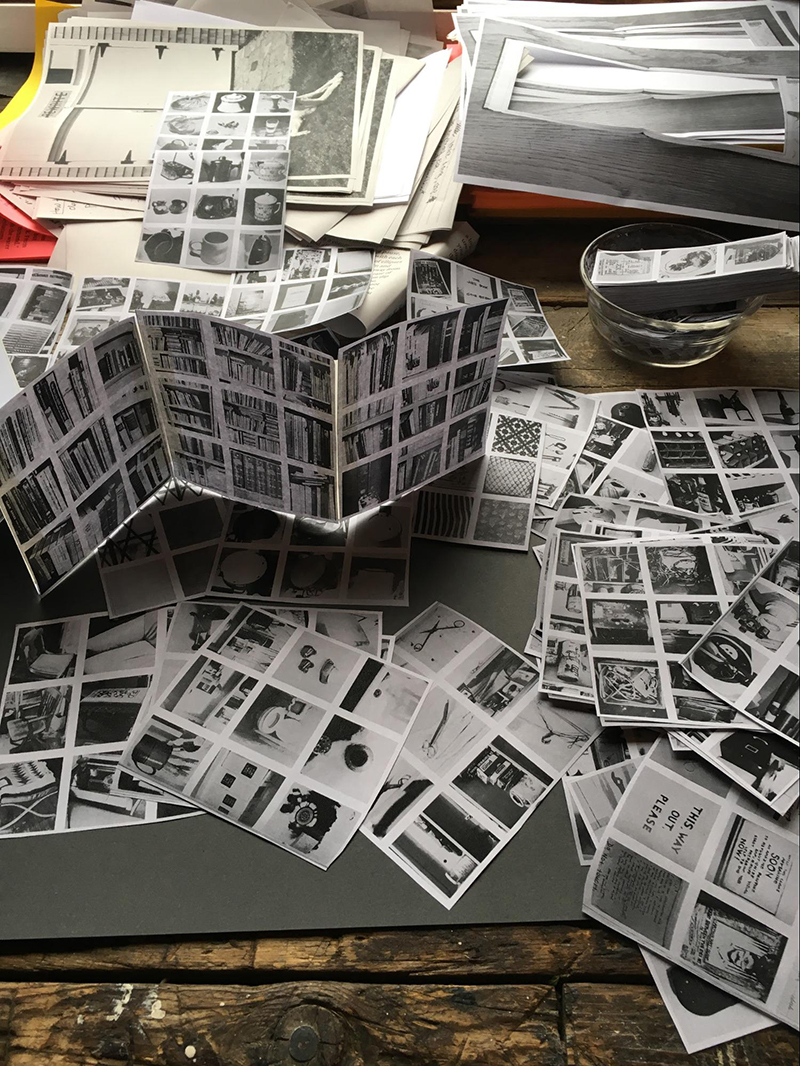
The ethos for DI from the start was to host a dinner where conversations didn’t end after dessert but could continue for a week. DI believes that the best interactions happen in hallways, while chopping vegetables, or walking from room to room. Indeed, DI seeks to extend such interactions by bringing the in-between moments deliberately to a particular place, space, and time (often Vinalhaven, often in June). DI workshops and events are not designed to produce set outcomes or to Get Things Done. And they do not follow traditional modes of operations; there are no ponderous lectures, carefully curated panel discussions, or professional development opportunities. Instead, framers frame a topic, and participants bring whatever they bring, be it a project, a prompt, an expertise, a way of being, a thing to cook, or some research to share.
It may be easier to say what DI is not than to say clearly what it is. DI is not rigid. DI is not outcome-centric. DI is not a school or a summer camp for designers, or a commune, or a conference. It is not a networking session, nor a place for bystanders.
DI is a place and a time where everyone who manages to get there rolls up their proverbial sleeves and moves out of their usual roles: Everyone becomes a teacher, but only for a moment. Everyone becomes a student, but only for a moment. Then things switch. One of the mantras frequently employed is: On the stage, in the wings, in the audience. Everyone keeps trading places, and the result is a sense of lively presence and an invitation to flex some new muscles.
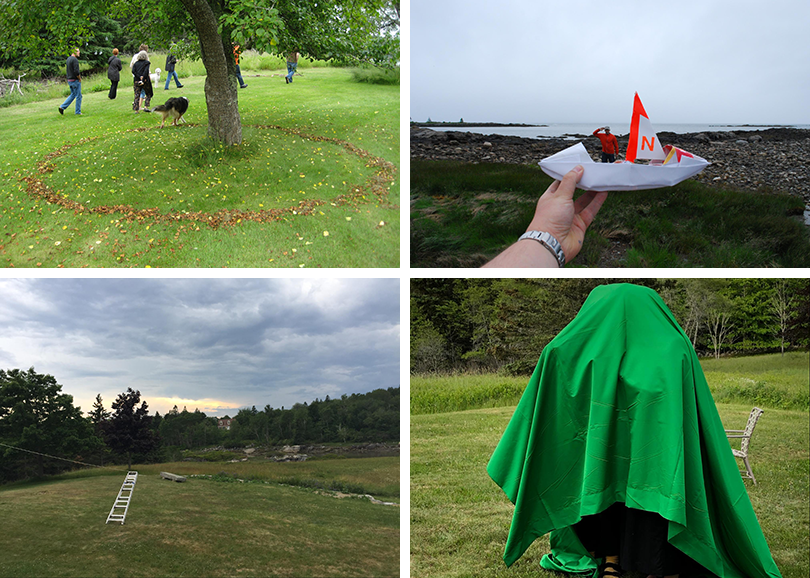
Again, ask four or five DI participants to describe their experience, and the answers differ pretty dramatically:
DesignInquiry is painful and delicious.Each DI is itself different; the formula of place + participants + weather + topic + food + whatever unexpected things happen, means each DI establishes its own universe with its own unique rhythms and experiences, its own culture and peculiarities.
DesignInquiry hurts and heals.
DesignInquiry is uncomfortable and mind expanding.
DesignInquiry is courage and permission, flexibility and interdependence, communal and solitary, creative and practical.
Most DesignInquiries begin with a shared planning document fondly referred to as Not-the-Schedule. This somewhat fluid schedule signals that while we do engage in a bit of framing and intentionality, we have a deep need to disrupt and resist the comfort that comes with an ordered and hierarchical calendar of events. Not the Schedule is this place where the teeter totter sits, and it wiggles. It’s a living breathing document where participants list their bios, their projects, their prompts, and have loose conversations about what might happen when they arrive. But once folks arrive to the Inquiry (at least for the Vinalhaven gatherings) and realize there really and truly is no internet, participants begin working in new ways — finding new territories to explore and new ways to collaborate. To give a smattering of examples, folks at DI have produced: a map of the island dump for a ghost. A collection of dead mosquito portraits. A meal where each fork was tied to someone else’s fork. A performance with broken umbrellas and exercise balls. An Island scavenger hunt intended to press the issue of place and authenticity. A set of Ed Ruscha tarot cards complete with several tarot reading sessions. A lively series of green-screen videos allowing participants to insert themselves literally anywhere.
For some, DI is specifically about experiencing discomfort, and things are arranged precisely to enhance this sense of distress. When you arrive, someone may ask you to hang up a projector, possibly using a rickety ladder. You might be asked to chop vegetables for dinner, or respond when you think you’re not ready to respond. Or show someone you’ve never met how to do something you’ve never done. But the discomfort only happens in tandem with a growing sense of trust and companionship that emerges as people live, eat, and work together.
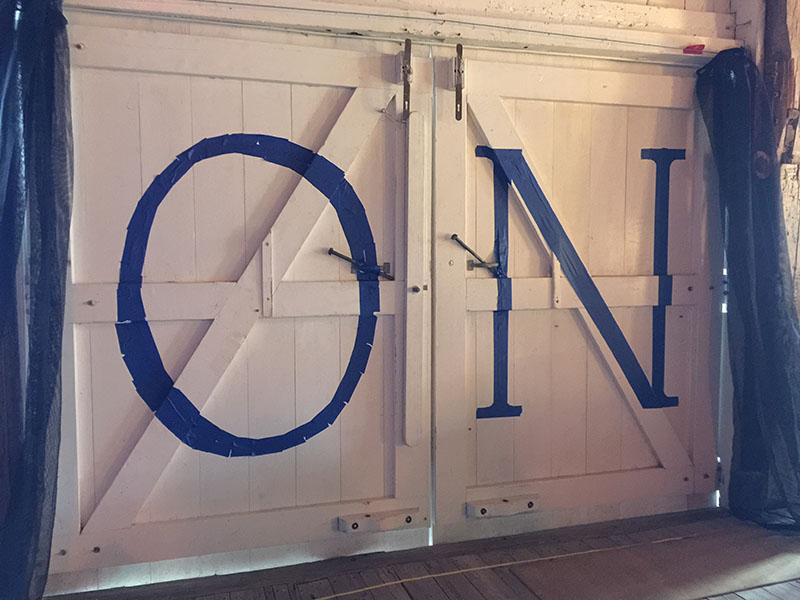
While many facts remain slippery, one comment recurs and is heard again and again: DesignInquiry is not for everyone. But maybe it IS for everyone: so long as you’re ok with mosquitoes, no internet, sharing a bedroom with ghosts and nighttime passers by. If you are not comfortable with deliberate discomfort as a way to move through a research or design investigation that you didn’t even know you were about to embark upon, then DI might not be for you. If you aren’t ok with cooking, cleaning, and schmoozing with total strangers who become fast friends over night, then you might want to look elsewhere. If you need to be told what to do, then DI might not be a good fit.
But if you like the idea of inserting yourself in a new place and enjoy unexpected encounters while you puzzle over some of the deepest thinking you’ll ever do with a group of mostly strangers, then DI might be just the ticket. Because at DI participants are constantly investigating what we hold onto too tightly and asking “why?” and also “why does it matter?” The framers make sure we’re not too comfortable in the structure because that’s not where the muscles are — and we want to develop new muscles. DI is for those who can meet the occasion where it is. The group invents things from the ground up, which can be destabilizing and stressful, but finding a new kind of balance with new people in this new place is how the magic happens.
This new balance sparks a deep sense of self-questioning. Where are my boundaries? What am I ignoring? Why isn’t this working? There is space and time for this inquiry, and simultaneously, watching others practice opens up a sense of play and experimentation. You are looking both inward and outward, reevaluating and imagining. Things fall apart, and then regroup.

For some, the best way to understand DI is to see it as a practice rather than an outcome. DI invites participants to become more responsive and present in the moment. While much of design focuses on outcomes and how something is perceived, DI shifts to see how things accrete and sediment, how they’re understood, how they’re strengthened simply by being present. DI refocuses the lens, and engenders a deep look at process, method, means, intention, and, perhaps most significantly, surprise.
With Futurespective, October 4 – December 14, 2019, DI recognizes its past, but again, not in any typical way. Rather than simply touting a series of successes, or hanging things on gallery walls, Futurespective continues to explore what’s possible at the nexus of the conceptual and the material through a series of open-ended extra-disciplinary exchanges. There are many ways to participate in the event’s array of activities, which will model the DI sense of openness, offering those who have not attended a DI event an opportunity to try to define DI for themselves.
DI is an approach to making, where everything, even setting the table, is a project. DI is the work that we do without predicting outcomes. It’s being open to processes, people, experiences. DI frames the questions, not the answers. The goal is for people to come to DI and leave with questions, curiosity, and inspiration to continue on. And the intention for this exhibit/series of events this fall in Portland (and in 2020 at other locations) is not so much to create a retrospective, but to embark upon a futurespective: a new voyage of inquiry, open to all.
All text and images copyright © their respective owners and DesignInquiry.
